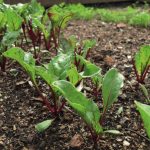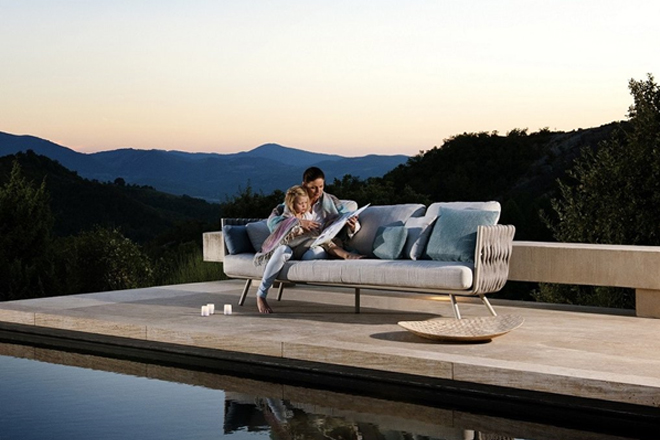A five-star boutique retreat in the heart of Tamworth, in country NSW, has a focus on organic and sustainable principles
I first met Peter and Sandy when a close friend recommended Froog (pronounced fr-owe-g) Moore Retreat and Sandy’s culinary skills. In fact, Sandy contributed recipes to earlier issues of this magazine. So it is with great pleasure that we bring you the behind-the-scenes story of this beautiful, productive property.
Peter and Sandy bought the 7000-square-metre block that was not just vacant but completely bare in 1989 with the aim of building their home and establishing a beautiful, park-like garden. They chose carefully as they both wanted to stay in the one spot for a long time. “Our vegie garden was started on day one and that’s why Peter wanted a bigger block — so we could have an orchard and grow our vegies,” says Sandy.
By 2003, they decided to establish a stylish and unique retreat with accommodation. The house was extended to include five guest rooms, a dining area and gallery. Part
of the retreat’s appeal is the beauty of the whimsical garden. Level gravel paths lead through garden rooms, inviting guests to find a peaceful and private space. According to Peter, “About one-third of the garden is gravel as a conscious water-wise measure.” Actually, there isn’t much lawn at all —instead, flourishing gardens and striking trees, such as the magnificent river red gum planted by Peter and Sandy as a sapling, majestically hold court in the outdoor space.
Edible garden
The couple share a passion for cooking fresh produce and gardening and both are driven to achieve their goals. “We are not stereotypical ‘greenie’ types,” says Peter.
“We believe it’s better to have some organic principles rather than none and we do the very best we can in a sustainable and organic way in our garden and the way we live.”
As members of the Tamworth Community Organic Garden Group, they attend meetings when time permits. Peter says the best advice he can give is, “Sensible gardening happens through observation.”
They knew exactly where the vegie patch and orchard would evolve, though there are fruiting trees throughout the garden space. There wasn’t a set plan, however, but what they considered carefully were the climatic factors: protection from the western sun and beds to form a long, pretty border. This worked well, especially when he tier-planted a row of spinach behind it, forming a stylish, colourful, edible hedge.
Guests are free to stroll through the vegie patch; in fact, they often ask how they can establish something similar at home, getting tips and ideas from Peter and Sandy and taking a snip here and there to taste.
Organic methods
I asked Peter what type of pests and diseases he has to contend with in this part of the country. Fruit fly seems to be a seasonal problem but Peter has a netting system
in place. After pollination, he encloses the gardens with fine netting, somewhat like tulle, to act as an exclusion barrier. This is perhaps the most organic choice for dealing with these pests and, of course, he can use the same method on fruits by covering individual pieces with an exclusion bag. He says this also keeps out other insects and birds.
During the summer he covers each of the vegetable beds with a shade screen. These are mounted just above the beds to protect edibles from the heat of the day.
Peter and Sandy practise sustainability on many levels. They are great recyclers, for example. Peter recalls how a friend told him way back in 1988, “Recycling is so overrated — it’s a trend that will die a natural death in a few years.” How wrong he was. Sandy says her parents and grandparents didn’t waste anything, so she was naturally influenced to do the same.
Peter loves his new composter, which is perfect for their garden as they generate quite a lot of kitchen scraps from feeding guests. It’s a Closed Loop Organics unit that’s fully contained and can reduce food waste by up to 90 per cent in 24 hours, with no smell at all. Everything can go into it except large beef bones (chicken, fish and lamb bones are fine) or scallop and oyster shells. The result is rich, fibrous compost about the strength of chicken manure. Waste paper is shredded and added to the compost too. Bark shed by the eucalypts and leaves from deciduous plants provide enough dry matter for mulching, with excess added to the compost. Plus, there are three 20,000-litre rainwater tanks supplying the house and garden.
The house is oriented north so the windows and other glassed areas absorb winter sun. The warmth is circulated by ceiling fans and most winter days the house remains at a comfortable 22°C until around 4pm. Tamworth can get very cold, so this is quite impressive.
The beautiful back verandah, bordered by containers filled with all sorts of herbs, is protected from the heat of summer by a curtain of thick, black fabric. This can be pulled across at around 2pm to keep the house cool, even on the fiercest summer day. Guests are spoilt at this natural haven. The exotic rooms are a visual treat, the organic garden is practical and inviting and Peter and Sandy are happy to share their ideas and tips about organic gardening and sustainability.
We finish our day sipping organic coffee with a delicious homemade tart inspired by a recent European culinary and cultural expedition, which they say has paved the way for more sustainable and culinary ideas.
Written by Diane Norris
Photos by Sandy Moore
Originally in Good Organic Gardening Volume 4 Issue 6



















